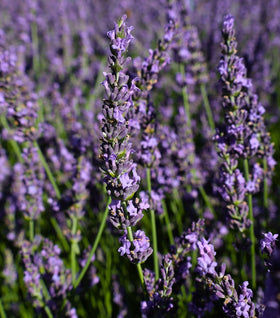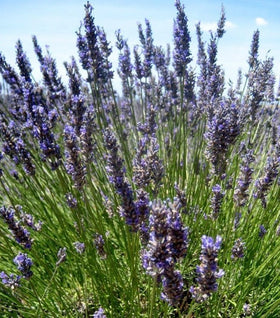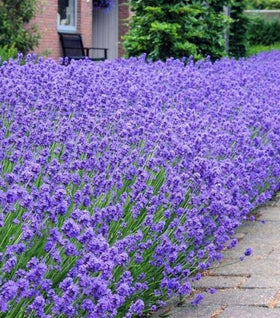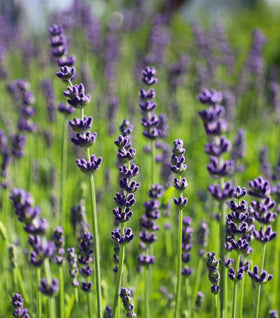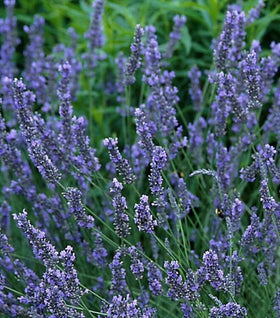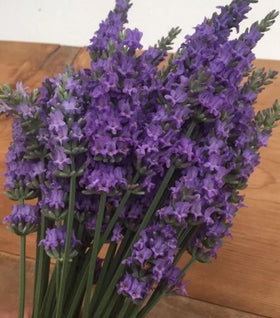Lavender Plants for Sale Online
If you’re looking for fragrance as well as beauty, you can’t go wrong with lavender sun perennials! These fragrant herbs are a lovely addition to any garden, whether you want them for pure aesthetic purposes or for their utility in the home.
Types of Lavender Plants
Lavender is a popular herb, best known for its rich floral scent. Related to the mint family, lavender is a hardy plant that’s highly versatile.
Three cultivars are available from Garden Goods Direct:
- The Lavender Hidcote: A compact cultivar, growing up to two feet tall and featuring deep purple flowers
- The Lavender ‘Provence': A fast-growing variety great for season-long harvesting
- The Lavender ‘Phenomenal': A large variety great for hedging, with uniform mounds and tall wands of deep purple flowers
Why Plant Lavender Plants?
Lavender are extremely versatile, not just in the garden but also in the home. As a garden plant, lavender is great for attracting pollinators, resulting in a living display throughout the season. In fact, many vegetable gardeners use it to attract bees to their plots. It’s also great for lining driveways and walkways, as their formal appearance and lovely scent can be a great welcome to your home. On top of it all, lavender is a mosquito and fly repellant, making it a great choice for edging patios and gazebos.
Inside the house, lavender offers just as many benefits. Lavender flowers are often used to scent linens and fabrics and deter fleas. If you’re a crafty type, you can also use it to scent soaps and make potpourri. Finally, lavender is a great herb for seasoning foods.
Tips for Choosing the Right Variety of Lavender Plant
The most important thing to consider when choosing to plant lavender is climate. Lavender is best suited to a middling climate in USDA plant hardiness zones 5 through 8. Some cultivars, like the lavender Hidcote and the lavender ‘phenomenal’, are suited to zones 4 through 9, giving them a wider range. In other words, the northernmost and southernmost regions of the continental United States are typically outside the growing area of most lavender plants.
Be sure to check the cultivar you like to ensure it’s suited to your local climate before purchasing. If you live in an area where lavender is compatible with the climate, you can choose whichever variety suits your aesthetic and functional purposes best.
How to Care for Lavender
Lavender care begins with learning how to plant. These perennials should be planted in locations with full sun and decent soil that drains well. If your soil is particularly poor, fertilizer may be a good choice. Once planted, water regularly until your lavender plant is established.
Once established, lavender care is very low-maintenance. Lavender requires minimal watering and pruning throughout its life. If the stems become particularly woody, prune them back by half their length to promote new growth. Beyond that, monitor your plant for any signs of disease or rot and handle them promptly.
Is Lavender Poisonous To Dogs And Cats?
Yes, the ASPCA has included Lavender, both Common and English Lavender, within the list of toxic plants for both cats and dogs.
Is Lavender Edible?
While this plant may be toxic to your furry friend, it is not toxic to humans. You can safely consume Lavender Flowers and it’s commonly used in various baked goods. A neat way to eat the aromatic petals is to mix them dry, mash up them, and mix them with granulated sugar (or sugar of your choice) to create Lavender Sugar. It’s often used as a topping on cookies, cakes, or pastries because it adds a unique and unexpected flavor.
You can also dry its flowers and use them to create your own teas or combine them with other herbs or ingredients, such as Black Tea, to create a blend of Earl Grey.
How Can I Stop My Lavender Plants From Becoming Woody?
Lavender will harden and become woody if they are not pruned regularly. This is problematic for more than aesthetic reasons. Not only will they appear stiff and have less soft foliage, but they are at more risk for waterlogging, water damage, root rot, and other issues. This is because the woody growth is not strong, as is the case with true shrubs, and new growth does not come from older wood.
The best way to slow this process is to prune your lavender regularly, as described above. Do not cut all the way down to the wood. Instead, cut to just above the wood and leave soft growth with leaves. This will encourage new growth and slow the woody aging process.
When Should I Harvest my Lavender Plant?
You should harvest your lavender blossoms in the spring or early summer to give your plant plenty of opportunities to produce more flowers for a second harvest. We think the best time of day to harvest lavender is in the morning. Wait until any morning dew has dried but before the heat of the mid-day sun draws out too much of the essential oils this plant produces. Lavender is a very soothing scent and is widely used as a calming essential oil in homeopathic remedies.

